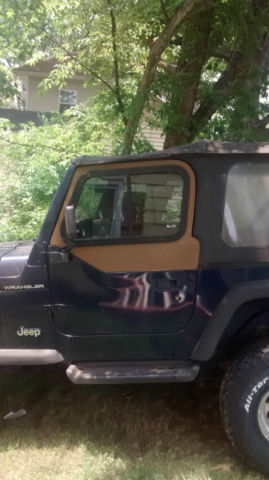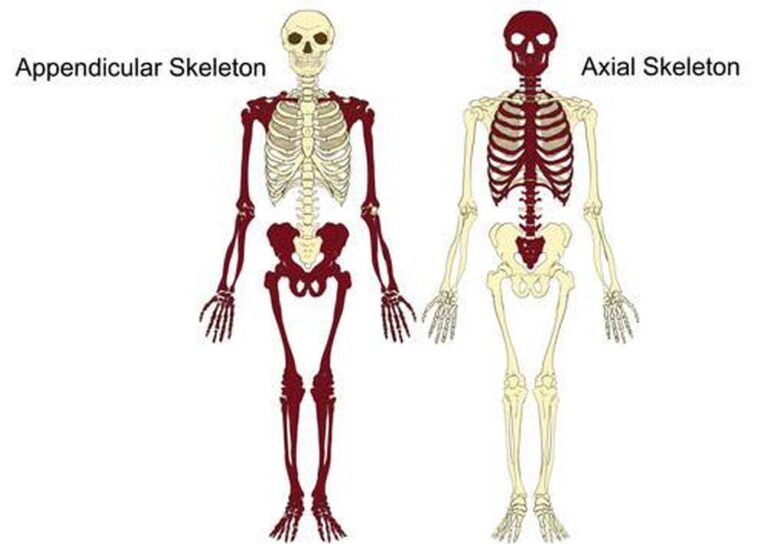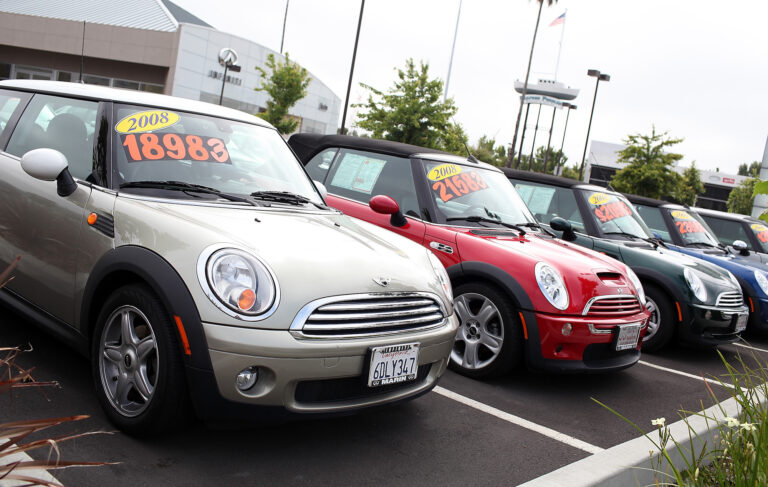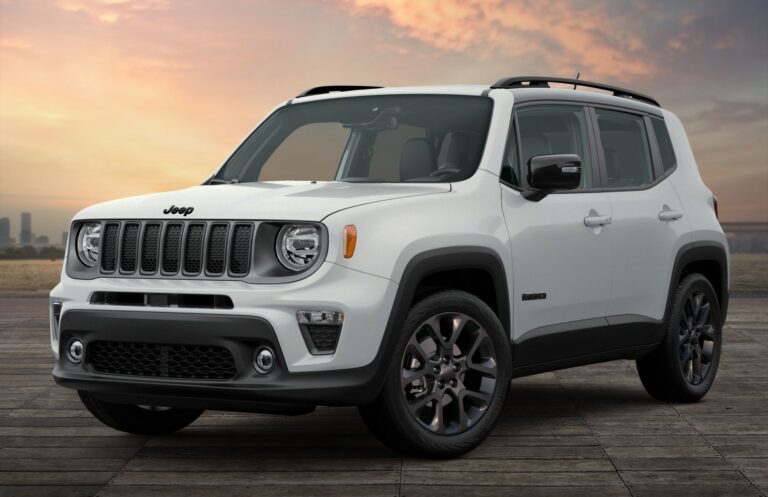Wrangler Jeep 97: The Unyielding Spirit of the TJ Era
Wrangler Jeep 97: The Unyielding Spirit of the TJ Era jeeps.truckstrend.com
The year 1997 holds a special place in the hearts of Jeep enthusiasts worldwide. It marked the advent of a new generation for the iconic Wrangler – the TJ. More than just a model year, the 1997 Wrangler, often simply referred to as the "Wrangler Jeep 97," represented a pivotal evolution, bridging the rugged simplicity of its predecessors with significant advancements in ride comfort and on-road civility, all while fiercely preserving its legendary off-road prowess. This era brought back the beloved round headlights, a nod to the classic CJ, and introduced a coil-spring suspension system that transformed the Wrangler’s driving dynamics. For many, the 1997 TJ is the quintessential modern classic Jeep, offering a perfect blend of nostalgic appeal, robust capability, and a surprisingly comfortable ride for a vehicle of its type.
This comprehensive guide will delve deep into the world of the 1997 Jeep Wrangler, exploring its design, performance, ownership experience, and what makes it such a sought-after vehicle even decades after its release. Whether you’re a seasoned Jeeper or considering your first plunge into the world of open-air adventure, understanding the nuances of the ’97 TJ is essential.
Wrangler Jeep 97: The Unyielding Spirit of the TJ Era
The Birth of a Legend: The 1997 TJ Generation
The transition from the YJ (1987-1995) to the TJ (1997-2006) was a momentous occasion for Jeep. After a one-year hiatus in 1996, the Wrangler returned with a revolutionary update that addressed many of the YJ’s criticisms, particularly its leaf-spring suspension and square headlights. The 1997 TJ proudly reintroduced the traditional round headlights, a move celebrated by purists who felt the YJ’s rectangular lamps were a departure from the Jeep identity.
However, the most significant engineering leap was the implementation of a Quadra-Coil suspension system derived from the Grand Cherokee (ZJ). This five-link coil-spring suspension replaced the rigid leaf springs of previous generations, drastically improving ride quality, articulation, and handling both on and off the pavement. The TJ maintained the traditional live axles (Dana 30 front, Dana 35 or optional Dana 44 rear), ensuring its robust off-road DNA remained intact. The frame was also redesigned, incorporating additional rigidity and strength, further contributing to the TJ’s improved performance and durability. This blend of classic aesthetics with modern engineering made the 1997 Wrangler an instant classic and laid the groundwork for its enduring popularity.
Heart and Soul: Powertrain and Performance
The 1997 Wrangler offered two well-proven engine options, both known for their reliability and ruggedness, albeit with different performance characteristics:
- 2.5-liter AMC 150 Inline-4: Standard on the base SE model, this four-cylinder engine produced 120 horsepower and 140 lb-ft of torque. While not a powerhouse, it was adequate for general driving and off-road crawling, offering decent fuel economy for a Jeep. It’s a simple, robust engine favored by those who prioritize economy and ease of maintenance.
- 4.0-liter AMC 242 Inline-6: This legendary engine, standard on Sport and Sahara models, was the workhorse of the Jeep lineup. Pumping out 181 horsepower and 222 lb-ft of torque, the 4.0L provided significantly more power and torque, making it the preferred choice for highway cruising, towing, and more demanding off-road excursions. Known for its bulletproof reliability and ample low-end torque, it’s widely considered one of the best engines Jeep ever produced.
Both engines could be paired with either a five-speed manual transmission (AX-5 for the 2.5L, AX-15 for the 4.0L) or a three-speed automatic transmission (30RH for the 2.5L, 32RH for the 4.0L). All 1997 Wranglers came standard with Jeep’s Command-Trac NP231 part-time four-wheel-drive system, offering 2H, 4H, and 4L modes for versatile traction management. While not known for its blistering speed or fuel efficiency (especially the 4.0L), the ’97 Wrangler delivered reliable, go-anywhere performance that cemented its reputation.
Design, Comfort, and Utilitarian Charm
The 1997 Wrangler TJ’s design is an iconic silhouette. Its short wheelbase, wide stance, exposed hinges, and removable doors and top scream adventure. The return to round headlights, flanked by the signature seven-slot grille, instantly made it recognizable as a true descendant of the original Willys.
Inside, the ’97 TJ remained true to its utilitarian roots. The dashboard was redesigned to be more ergonomic than the YJ, but still featured durable, easy-to-clean materials. Comfort was improved over previous generations thanks to the new suspension, but buyers shouldn’t expect luxury. Basic amenities included a heater, optional air conditioning, and a rudimentary stereo system. The true "comfort" of a Wrangler comes from its open-air capability: the removable soft top (or optional hardtop), fold-down windshield, and removable doors offer an unparalleled connection to the environment, transforming it from a rugged SUV into a fun, open-air vehicle in minutes. The rear bench seat was designed to be removable for extra cargo space, highlighting its practical, go-anywhere philosophy.

Unmatched Off-Road Prowess
The 1997 Wrangler TJ is revered for its off-road capabilities, and for good reason. Its combination of a short wheelbase, high ground clearance, solid axles, and the new coil-spring suspension made it an exceptionally capable machine right off the showroom floor.
- Coil Spring Articulation: The coil springs allowed for significantly greater wheel articulation compared to leaf springs, keeping tires on the ground over uneven terrain and improving traction.
- Approach, Departure, and Breakover Angles: The ’97 TJ boasted impressive angles (42° approach, 32° departure, 23° breakover) that allowed it to climb over obstacles and descend steep grades without scraping.
- Robust Drivetrain: The Command-Trac NP231 transfer case is a proven, reliable unit, and the live axles (Dana 30 front, Dana 35 or optional Dana 44 rear) are incredibly durable, especially the Dana 44 for more aggressive off-roading.
- Compact Size: Its relatively small footprint allowed it to navigate tight trails where larger vehicles would struggle.
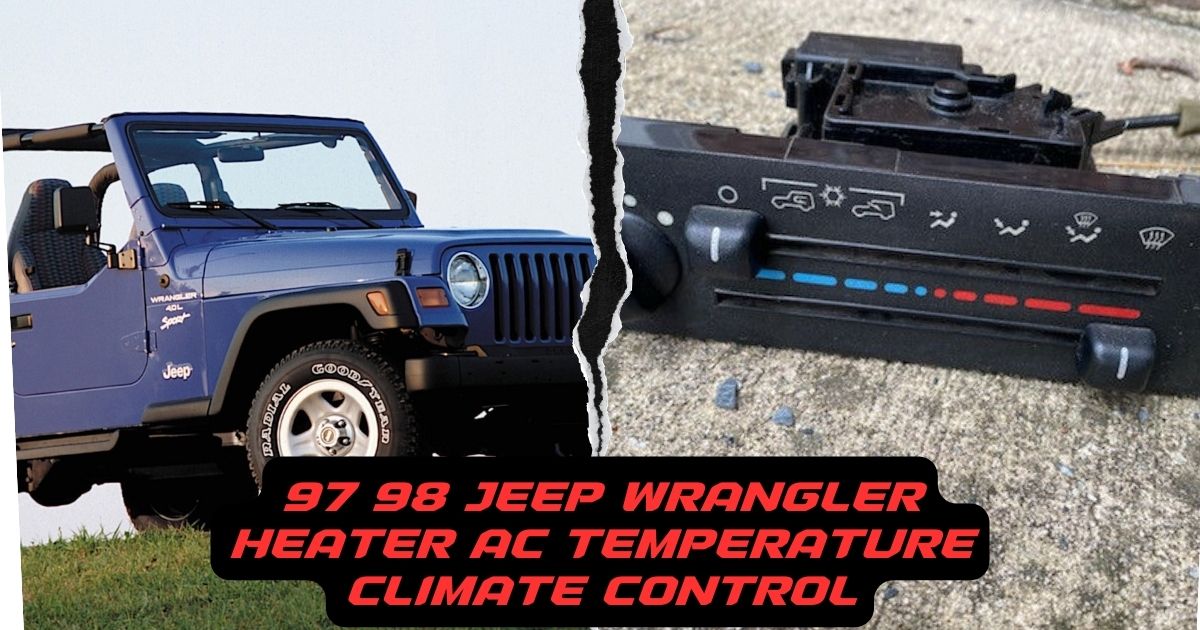
These attributes, combined with its simple, rugged construction, made the 1997 TJ a favorite for off-road enthusiasts. It’s a platform that is highly adaptable to modifications, further enhancing its already formidable capabilities.
Ownership Insights: What to Expect
Owning a 1997 Wrangler TJ is a unique experience, blending classic charm with modern usability. However, as with any vehicle approaching three decades old, there are specific considerations:
- Maintenance: Regular maintenance is crucial. These are robust vehicles, but components wear out. Expect to replace fluids, brakes, belts, and hoses periodically.
- Common Issues:
- Rust: The biggest nemesis. Check the frame (especially near the skid plate and control arm mounts), body mounts, floor pans, and fender wells meticulously. Rust can lead to structural compromise.
- Exhaust Manifold Cracks: A common issue with the 4.0L engine, leading to ticking noises and exhaust leaks.
- Oil Leaks: Rear main seal and valve cover gaskets are common leak points on the 4.0L.
- Steering Play: Worn steering components (tie rod ends, ball joints, steering box) can lead to loose steering.
- Soft Top Leaks: Weatherstripping degrades, leading to leaks during heavy rain.
- HVAC Fan Issues: The blower motor resistor is a common failure point.
- Parts Availability: Generally excellent. Due to the TJ’s popularity and long production run, aftermarket support is extensive, and OEM parts are still available for many components.
- Daily Driving: The ’97 TJ is certainly capable of daily driving. However, don’t expect a quiet, smooth ride like a modern SUV. It’s louder, less refined, and has a more truck-like feel. Fuel economy (especially with the 4.0L) is not its strong suit.
- Safety: Safety features are minimal by modern standards (no airbags for passengers, basic ABS if equipped). Drive defensively.
The Buyer’s Guide: Finding Your ’97 TJ
Purchasing a 1997 Jeep Wrangler requires careful consideration, as condition varies wildly. Here’s what to look for:
- Rust, Rust, Rust: This cannot be overstressed. Inspect the frame thoroughly, especially where the skid plate bolts on, the lower control arm mounts, and around the steering box. Check the body mounts, rocker panels, and floor pans (under the carpet). Surface rust is manageable; structural rust is a deal-breaker.
- Fluid Leaks: Check for oil, coolant, transmission, and differential fluid leaks. A small drip might be manageable, but significant leaks indicate larger problems.
- Engine Condition: Listen for unusual noises (ticking from exhaust manifold, knocking, misfires). Check the oil for sludge or milky consistency. Ensure the engine starts easily and idles smoothly.
- Transmission & Transfer Case: Test all gears, including reverse, in both 2WD and 4WD (high and low). Listen for grinding or clunking. Manual transmissions should shift smoothly.
- Suspension & Steering: Look for worn bushings, cracked springs, or leaking shocks. Test for excessive play in the steering wheel.
- Tires: Check for even wear, which indicates proper alignment and suspension health.
- Electrical: Test all lights, wipers, horn, windows, and HVAC system.
- Paperwork: Ensure the title is clear, and check service records if available.
- Test Drive: Pay attention to how it drives on various surfaces. Does it pull to one side? Are there vibrations at speed? How do the brakes feel?
Enhancing the Legend: Popular Modifications
One of the greatest appeals of the 1997 Wrangler is its vast aftermarket support and ease of modification. Owners frequently personalize their TJs to enhance performance, aesthetics, or off-road capability.
- Lift Kits and Tires: This is often the first modification. Lifts (2-4 inches) allow for larger tires (31-35 inches), improving ground clearance and off-road traction.
- Bumpers and Armor: Aftermarket steel bumpers provide better approach/departure angles and protection. Skid plates and rock sliders protect vulnerable underbody components.
- Winches: Essential recovery gear for off-roading.
- Lighting: LED light bars and auxiliary lights improve visibility on trails.
- Drivetrain Upgrades: Re-gearing differentials to match larger tires, installing lockers for extreme traction, or upgrading axles for strength are common for serious off-roaders.
- Interior Upgrades: Aftermarket seats, sound systems, and storage solutions can enhance comfort and utility.
When modifying, it’s crucial to maintain a balance and consider how each change affects other components. Research thoroughly, and choose quality parts from reputable manufacturers.
Price Table: 1997 Jeep Wrangler TJ Valuation Guide
The price of a 1997 Jeep Wrangler TJ varies significantly based on condition, mileage, trim level, modifications, and geographical location. This table provides a general estimated range. Prices for highly modified or exceptionally pristine examples can exceed these ranges.
| Trim Level | Engine | Condition: Fair (Needs Work) | Condition: Good (Driver Quality) | Condition: Excellent (Well-Maintained) |
|---|---|---|---|---|
| SE | 2.5L I4 | $3,000 – $5,000 | $5,500 – $8,000 | $8,500 – $12,000+ |
| Sport | 4.0L I6 | $4,000 – $6,500 | $7,000 – $10,500 | $11,000 – $16,000+ |
| Sahara | 4.0L I6 | $4,500 – $7,000 | $7,500 – $11,500 | $12,000 – $18,000+ |
Factors Influencing Price:
- Rust: The less rust, the higher the value.
- Mileage: Lower mileage generally commands a higher price, but maintenance history is more critical.
- Maintenance Records: A well-documented service history adds significant value.
- Hardtop/Soft Top: Having both, or a good condition hardtop, increases value.
- Modifications: Well-done, tasteful modifications can add value, but poorly executed or extreme mods might deter buyers.
- Optional Dana 44 Rear Axle: A desirable upgrade for off-roaders, increasing value.
- Geographic Location: Prices can vary regionally.
Frequently Asked Questions (FAQ) about the 1997 Jeep Wrangler TJ
Q1: Is the 1997 Jeep Wrangler TJ reliable?
A1: Yes, especially with the 4.0L inline-six engine. Both engine options are known for their durability. However, like any vehicle approaching 30 years old, regular maintenance is key, and components will eventually wear out. Rust is the biggest threat to its longevity.
Q2: What’s the fuel economy like for the ’97 TJ?
A2: Not great. Expect around 15-18 MPG combined for the 4.0L engine and slightly better for the 2.5L (17-20 MPG), depending on driving style, tire size, and modifications.
Q3: Can I daily drive a 1997 Wrangler?
A3: Absolutely. Many people do. However, be aware that it’s a more raw driving experience compared to modern SUVs. It can be loud, less comfortable on long trips, and lacks modern safety features.
Q4: What’s the main difference between the YJ and TJ?
A4: The 1997 TJ brought back round headlights and, most significantly, introduced a coil-spring suspension system, replacing the YJ’s leaf springs. This drastically improved ride quality and articulation. The interior was also updated.
Q5: What are the most common problems to look out for when buying a ’97 TJ?
A5: Rust (frame, body mounts, floor pans) is the number one issue. Other common problems include exhaust manifold cracks (4.0L), oil leaks (rear main seal), worn steering components, and leaky soft tops.
Q6: Is the 2.5L engine sufficient for off-roading?
A6: Yes, the 2.5L is capable off-road, especially with proper gearing and tire choice. Its lighter weight can even be an advantage in some situations. However, the 4.0L offers significantly more torque, which is beneficial for crawling and tackling steep obstacles.
Conclusion
The 1997 Jeep Wrangler TJ stands as a testament to timeless design and enduring capability. It masterfully blended the rugged, open-air spirit of its predecessors with crucial advancements in ride comfort and handling, making it an exceptionally well-rounded vehicle. For those seeking a genuine off-road icon that can also serve as a daily driver, the ’97 TJ offers an unparalleled experience. Its robust construction, legendary engines, and vast aftermarket support ensure that these vehicles will continue to conquer trails and turn heads for decades to come. Owning a 1997 Wrangler is more than just owning a car; it’s an embrace of adventure, a commitment to classic American ingenuity, and a ticket to a vibrant community of passionate enthusiasts. The spirit of the ’97 TJ truly lives on, an unyielding symbol of freedom and exploration.

